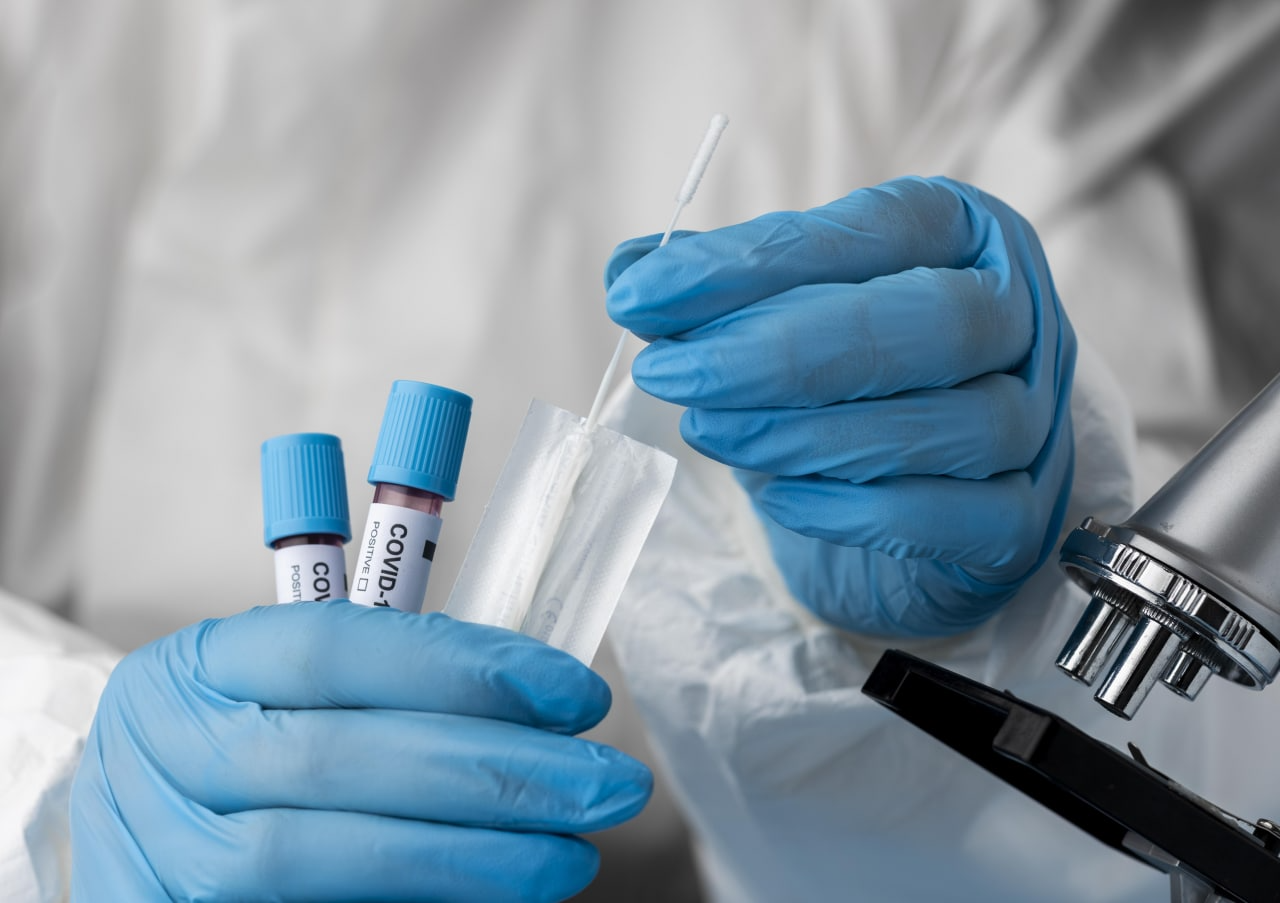Published by: Diana Luai Awad, Dr Pharmacist on Thursday 30.June.2022
Infertility is defined as the absence of pregnancy after 1 year of regular intercourse without contraception1. Approximately 17% of couples in industrialized countries seek medical help for this reason. According to the World Health Organization, female factors lead to 37% of infertility cases and are associated with a number of diseases and conditions2,3. Let’s examine the most common of them.

Ovarian Insufficiency
Ovarian dysfunction is accounting for 25% of female infertility cases2. It can be related to various factors.
Ovulation disorders include irregular ovulation (oligoovulation) or anovulation. The WHO classification of anovulation3 is used for the detection and treatment of anovulatory disorders:
- hypogonadotropic normoestrogenic, such as in polycystic ovary syndrome;
- hypogonadotropic hypogonadal-hypothalamic amenorrhea;
- hypergonadotropic hypoestrogenic – premature ovarian failure;
- hyperprolactinemic anovulation, for example, with hypo- and hyperthyroidism.
Oocyte aging is another factor of female infertility. The number and quality of oocytes decrease with age. Girls have between 1 and 2 million follicles at birth and about 300,000 follicles at the onset of puberty4. After age 35, the rate of follicle loss increases dramatically. It is accelerated by smoking, radiation, and autoimmune diseases. Women with a depleted follicle pool may ovulate regularly, but due to the poor quality of the oocytes, they cannot conceive.
Anomalies of the Fallopian Tubes and Adhesions in the Pelvis
The tubal factor is accounting for 11% of female infertility cases and pelvic adhesions for 12% of cases2. Both conditions inhibit normal movement of oocytes and spermatozoa through the fallopian tubes. The main causes of tubal factor infertility:
- pelvic inflammatory diseases (PIC) associated with chlamydia or gonococci or other pathogens
- severe endometriosis
- adhesions after previous surgery
- appendicitis, inflammatory bowel disease and other inflammatory conditions in abdomen
- diverticulosis of the Fallopian tube (salpingitis isthmica nodosa, SIN)
- tubal polyps.
In women with obstruction of the distal Fallopian tubes, hydrosalpinx may develop – the accumulation of fluid in the lumen of the tube. It reduces the success rate of in vitro fertilization. Hydrosalpinx prevents the migration of spermatozoa, and also leads to the reverse reflux of the contents of the fallopian tubes into the endometrial cavity, which creates a hostile environment for embryo implantation5.
Diseases and Anomalies of the Uterus
The main cause of uterus infertility is a disruption of the embryo implantation. Uterine fibroids (leiomyoma) are common benign tumors of smooth muscles. Fibroids with submucosal and intracavitary components may reduce pregnancy rates and implantation. Doctors consider hormonal changes in hypothalamus-pituitary-ovaries-uterus system to be the main factor in reproductive dysfunction in uterine fibroids. Many patients with fibroids have anovulatory cycles with varying levels of estrogen saturation or biphasic cycles with luteal phase deficiency. Mechanical factors also play a certain role. For example, if the tumor is located in the region of the tubal angle, it compresses the interstitial part of the tube and interferes with its patency. Surgical removal of the tumor increases likelihood of the implantation6.
Congenital uterine anomalies are important causes of infertility and miscarriage. A unicornuate uterus is formed when the growth of one Müllerian duct stops or slows down and the other develops normally. With such an anomaly pregnancy is possible, but its outcome depends on uterus size. The bicornuate uterus is formed by incomplete fusion of the middle part of the Müllerian ducts. It has two cavities and one cervix, less often two, which are connected to a normal vagina or a vagina separated by a partial septum. Two halves in the uterus, separated by a rebirth, are associated with the worst reproductive outcome7.
Endometrial polyps and synechiae also lead to female infertility. The causes of synechia are:
- incomplete abortion
- missed miscarriage
- hydatidiform mole
- postpartum hemorrhage
- remnants of placental tissue.
Endometriosis as a Cause of Infertility
Endometriosis is one of the most common pathologies of the reproductive age. While healthy women have a 15–20% chance of becoming pregnant in any single menstrual cycle, untreated women with genital endometriosis have a 2–10% chance8,9. Endometriosis is responsible for 15% of female infertility2. This is a multifactorial disease in which a benign growth of endometrium tissue occurs above its normal location.
Current theories do not fully reveal the true etiology of infertility associated with endometriosis. But there are insights about tubal factor, ovarian dysfunction, changes in endometrial receptivity, and others. A special place is given to resistance to progesterone, which is associated with a decrease in the total number of progesterone receptors. This pathology impairs the expression of progesterone-inducible proteins important for endometrial implantation and receptivity8,9.
Other Causes of Infertility
Cervical factors. Normal cervical mucus facilitates the transport of sperm in the middle of the cycle. With congenital malformations and cervix injuries, including surgical ones, stenosis and inability of the cervix to produce normal mucus may occur. This will reduce fertility.
Immune factors. Women with certain autoimmune diseases have an increased risk of infertility unrelated to the direct effects of antibodies on fertilization and implantation. For example, premature ovarian failure has been described in women with systemic lupus erythematosus and myasthenia gravis. Autoimmune oophoritis can occur as a part of the polyglandular autoimmune deficiency syndrome type I and type II. Patients with untreated celiac disease may also have an increased incidence of reproductive disorders, including infertility, miscarriage, and intrauterine growth restriction10.
Genetic causes. It has been shown that infertile couples have a higher prevalence of karyotype anomalies (trisomy, mosaic, translocation) than the general population11. Frequency varies depending on the cause of infertility and medical history. The scientists also identified individual genes that affect fertility, including KAL1, the FSH receptor, TUBB8. Mutations of the latter are unique in that they affect only oocytes, disrupting the function of microtubules during oocyte division and stopping their maturation12.
Unexplained infertility is a diagnosis of exclusion. Many cases of unexplained infertility can be associated with a slight influence of several factors at once.
Bibliography
- World Health Organization (WHO). International Classification of Diseases, 11th Revision (ICD-11) Geneva: WHO 2018.
- WHO Technical Report Series. Recent Advances in Medically Assisted Conception Number 820, 1992, pp 1-111.
- Walker M. H., Tobler K. J. Female infertility. Accessed 20.06.2022.
- Baker TG. Radiosensitivity of mammalian oocytes with particular reference to the human female Am J Obstet Gynecol 1971; 110:746.
- Barbieri R. L. Female infertility. Yen and Jaffe's reproductive endocrinology Elsevier.2019; 556-581. e7.
- Metwally M, Raybould G, Cheong YC, Horne AW. Surgical treatment of fibroids for subfertility Cochrane Database Syst Rev 2020; 1:CD003857.
- Hassan M. A. M., Lavery S. A., Trew G. H. Congenital uterine anomalies and their impact on fertility Women’s Health 2010; 6(3):443-461.
- Huges E. G., Fedorkow D. M., Collins J. A. A quantitative overview of controlled trials in endometriosis-associated infertility Fertil. Steril. 1993; 59: 963–70.
- Toma S. K., Stovall D. W., Hammond M. G. The effect of laparoscopic ablation or danocrine on pregnancy rates in patients with stage I or II endometriosis undergoing donor insemination Obstet. Gynecol. 1992; 80: 253–6.
- Tersigni C, Castellani R, de Waure C, et al. Celiac disease and reproductive disorders: meta-analysis of epidemiologic associations and potential pathogenic mechanisms Hum Reprod Update 2014; 20:582.
- Beke A. Genetic causes of female infertility Genetics of Endocrine Diseases and Syndromes 2019: 367-383.
- Feng R, Sang Q, Kuang Y, et al. Mutations in TUBB8 and Human Oocyte Meiotic Arrest N Engl J Med 2016; 374:223.
Colleagues, haven't you joined our PharmaCourses of MENA region Telegram chats yet?
In the chats of more than 6,000 participants, you can always discuss breaking news and difficult situations in a pharmacy or clinic with your colleagues. Places in the chats are limited, hurry up to get there.
Telegram chat for pharmacists of MENA region: https://t.me/joinchat/V1F38sTkrGnz8qHe
Telegram chat fo physicians of MENA region: https://t.me/joinchat/v_RlWGJw7LBhNGY0








